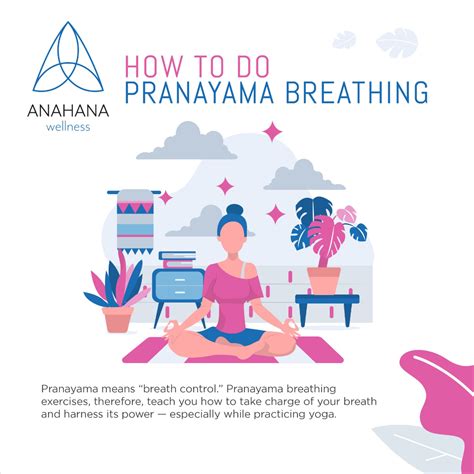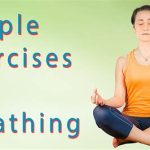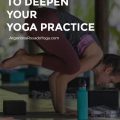Essential Breathwork Techniques for Every Yogi: Mastering the Art of Pranayama
Breathwork is a foundational aspect of yoga practice, allowing practitioners to deepen their awareness, enhance physical and mental well-being, and achieve greater balance. Whether you’re a beginner or an advanced yogi, understanding and mastering the key principles of breathwork, also known as pranayama, is essential for unlocking the full potential of your yoga practice.
Introduction
In yoga, breath is often considered the bridge between the body and mind. The ancient practice of pranayama, which translates to “control of life force,” emphasizes the regulation of the breath to enhance vitality, focus, and relaxation. While many yogis are familiar with postures (asanas), fewer understand the depth of breathwork techniques that accompany them. In this article, we’ll explore the essential breathwork techniques every yogi must know, diving into their historical roots, practical applications, and modern interpretations.
Key Concepts
- Prana: The life force or vital energy in the body, regulated through the breath.
- Apana: The downward-moving energy in the body, responsible for elimination and release.
- Nadi Shodhana: Alternate nostril breathing that balances energy pathways (nadis) in the body.
- Kumbhaka: Breath retention, a key component of advanced pranayama practices.
- Bandhas: Energy locks activated through breathwork to guide prana.
- Ujjayi: A victorious breath technique that helps in focusing during asana practice.
Historical Context
Pranayama has its roots in the ancient Indian texts, primarily the Upanishads and the Yoga Sutras of Patanjali. Historically, breathwork was used not only for physical benefits but also for spiritual development. Pranayama is considered the fourth limb of the eight-limbed path of yoga (Ashtanga Yoga) and serves as the bridge between the external and internal practices of yoga. The regulation of breath was seen as a means to control the mind and reach higher states of consciousness.
Current State Analysis
Today, breathwork techniques are widely adopted beyond traditional yoga settings, often used in mindfulness practices, therapy, and even athletic training. Modern research highlights how breath control impacts the autonomic nervous system, stress levels, and cognitive function. For yogis, the practice of pranayama remains integral in connecting breath to movement, enhancing the benefits of both physical postures and meditation.
Practical Applications
Here’s how to incorporate key pranayama techniques into your daily yoga routine:
- Ujjayi Breath (Victorious Breath): A slow, controlled breath that involves slightly constricting the throat to create an ocean-like sound. This breath helps focus and anchors you during asana practice.
- Nadi Shodhana (Alternate Nostril Breathing): This technique balances the left and right hemispheres of the brain, promoting calmness and clarity. Practice this for a few minutes before or after your yoga session for maximum benefit.
- Kapalabhati (Skull Shining Breath): A powerful cleansing technique involving rapid exhalations. It energizes the body and clears mental fog.
- Bhramari (Bee Breath): A calming practice where you hum like a bee, extending the exhalation. This is excellent for stress relief and quieting the mind.
Case Studies
| Case Study | Technique Used | Outcome |
|---|---|---|
| Sarah, a corporate professional, used Ujjayi breath during her daily practice. | Ujjayi Breath | She reported increased focus, stress reduction, and improved mental clarity. |
| James, an athlete, incorporated Kapalabhati before workouts. | Kapalabhati | He experienced enhanced lung capacity and sustained energy during high-intensity training. |
| Anya, a yoga teacher, introduced Nadi Shodhana to her beginner students. | Nadi Shodhana | Her students found a greater sense of balance and emotional stability after several sessions. |
Stakeholder Analysis
Various groups can benefit from understanding breathwork beyond the yoga mat:
- Yoga Practitioners: Breath control helps deepen the physical and meditative aspects of yoga.
- Meditators: Breathwork serves as a key tool for mindfulness and mental focus.
- Athletes: Incorporating breath control into training can enhance performance and recovery.
- Healthcare Providers: Therapists and doctors can use pranayama techniques to help patients manage anxiety, depression, and chronic pain.
Implementation Guidelines
To effectively integrate breathwork into your yoga practice, consider the following steps:
- Start Slow: Begin with basic techniques such as Ujjayi or Nadi Shodhana for just 5-10 minutes per day.
- Consistency is Key: Regular practice leads to noticeable benefits, so aim for daily breathwork.
- Practice in a Calm Environment: Breathwork should be done in a quiet space free from distractions.
- Combine with Asanas: Pairing breath with movement enhances the overall yoga experience.
- Progress Gradually: As you advance, explore more challenging techniques like Kumbhaka (breath retention).
Ethical Considerations
While breathwork has numerous benefits, it’s essential to approach it responsibly. Certain pranayama techniques, especially advanced ones like Kumbhaka and Kapalabhati, can lead to dizziness or discomfort if not practiced correctly. It is crucial for yoga instructors to ensure their students are well-prepared for these techniques and understand any contraindications, such as pregnancy, heart conditions, or respiratory disorders. Additionally, instructors should avoid imposing these practices on unwilling students, as pranayama is a personal journey.
Limitations and Future Research
Although pranayama has been practiced for thousands of years, modern research into its benefits is still evolving. Some limitations of current studies include small sample sizes and a lack of long-term data. Future research could focus on the effects of breathwork on specific populations, such as individuals with anxiety disorders, athletes, or those with chronic respiratory conditions. Additionally, exploring the neurobiological mechanisms behind pranayama could lead to more targeted applications in therapy and mental health treatment.
Expert Commentary
Dr. Maya Patel, a well-known yoga therapist, states, “The beauty of pranayama lies in its simplicity and accessibility. You don’t need to be an advanced yogi to benefit from breathwork, but the key is consistency and mindfulness. Over time, you can feel the physical, mental, and emotional changes that pranayama brings.”
Ravi Shankar, a seasoned yoga teacher, adds, “Breathwork is about so much more than just breathing. It’s about understanding the subtle energies in the body and learning to control them. Once students start to see this, they truly transform their practice.”
Future Implications: As breathwork becomes increasingly popular in fields like sports science, therapy, and even corporate wellness, we can expect to see more cross-disciplinary applications of pranayama in the coming years. The potential for breathwork to enhance well-being on multiple levels is immense, and its continued exploration will likely lead to new, innovative practices.








